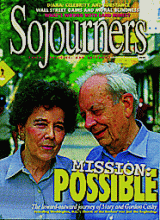I first saw a picture of a lamp shade made from human skin when I was 9 years old. A documentary on television showed people collecting items for a museum of remembrance—maybe in New York, maybe in Jerusalem, I don't recall. I already had vague images of World War II from classmates whose grandparents and parents had lived through it. But the lamp shades were new to me. I sat frozen on our couch, wondering why no one had bothered to tell me this part of the story.
For a few years after this, I read every book I could find about World War II, looking for what else I'd missed. It seemed odd even then: I am not Jewish, and my family left Europe at the turn of the century. But I took my reading very seriously. War was not a game, as my mother shouted from the kitchen window whenever she caught us at play, belly-down in the dirt to escape from that day's enemy.
I hadn't thought much about this until a friend and I were talking about the childhood books we remembered most vividly. "Definitely the ones about World War II and the Holocaust," she said. We rattled off the titles, The Upstairs Room, I Am David, The Diary of Anne Frank. We recalled bitter tastes, horrible smells, adrenaline rushes of fear, the relief of liberation—sensations we'd read about years ago.
Read the Full Article
